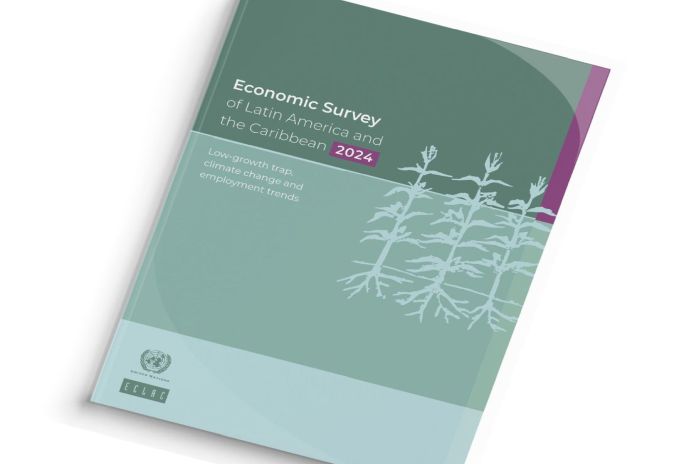- A new annual report by ECLAC indicates that the region’s economies will expand by 1.8 percent in 2024 and 2.3 percent in 2025.
SANTIAGO, Chile – The Economic Commission for Latin America and the Caribbean (ECLAC), released a new edition of its annual report Economic Survey of Latin America and the Caribbean 2024: Low-growth trap, climate change and employment trends, in which it stresses that the region remains stuck in a trap of low growth accompanied by poor investment performance and low labor productivity, which is compounded by limited domestic space for implementing macroeconomic policies for a reactivation as well as global uncertainty.
The report – one of this United Nations regional economic commission’s most important – was presented in Santiago, Chile at a press conference led by the executive secretary of the Economic Commission for Latin America and the Caribbean (ECLAC), José Manuel Salazar-Xirinachs.
According to the publication, over the last decade, Latin American countries have exhibited low economic growth, with an average rate of 0.9 percent in the 2015-2024 period. For that reason, the report indicates that energizing growth is a paramount task for the region to be able to respond to the environmental, social and labor-related challenges being faced today.
“Tackling the growth trap, increasing employment and creating jobs with higher productivity requires strengthening productive development policies that are complemented by macroeconomic and labor policies as well as those on climate change adaptation and mitigation,” the organization’s executive secretary emphasized.
ECLAC’s Economic Survey 2024 projects that Latin America and the Caribbean will remain on a low growth trajectory this year, at an average rate of 1.8 percent. This slow growth is expected to be observed in all the subregions, since South America is seen growing by 1.5 percent; Central America and Mexico by 2.2 percent; and the Caribbean (without including Guyana) by 2.6 percent. In 2025, 2.3 percent growth is expected for the region as a whole, with the increase attributable to South America’s performance (which will reach 2.4%).
The report’s second section analyzes the impact of the low-growth trap and climate change on employment trends. The main results indicate that growth and job creation are closely related at an aggregate and sectoral level, which is why the deceleration seen in the economic growth rate translated into a decline in the growth rate of the number of persons employed in the last decade. Between 2014 and 2023, average growth in the number of persons employed in the region was 1.3 percent, a third of what was recorded in the 1970s (3.9%).
Furthermore, a fall in labor productivity was confirmed, with the 2024 figure expected to be below the level seen in 1980.
In addition, employment growth is due mainly to an increase in informal employment, particularly among women. Like the dynamics of overall employment, informality is concentrated in sectors with lower productivity, especially construction, commerce, transportation/tourism and services (which together account for 74.4% of informal workers).
With regard to the impact of climate change on employment, ECLAC’s report details a scenario in which, to the extent that investments in adaptation and mitigation are not made, the intensification of climate change-related shocks could prompt a loss of nearly 43 million jobs (or 10% of the labor force) from now until 2050, with 15 million of them being lost in the agricultural and tourism sectors.
ECLAC: Foreign Direct Investment in Latin America and the Caribbean Fell by 9.9% in 2023, but Amount Received is Above the Average in the Last Decade

